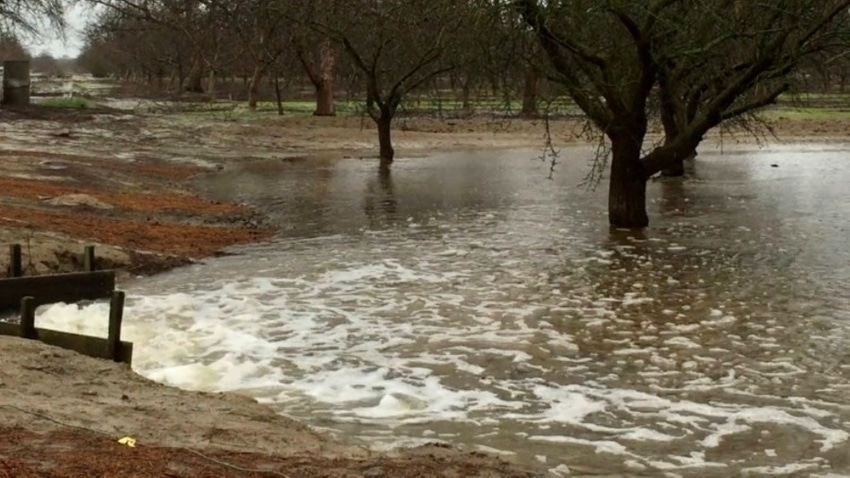
To achieve groundwater sustainability under California's Sustainable Groundwater Management Act, or SGMA, demand management – policies that encourage water conservation – will be necessary, says Ellen Bruno, University of California Cooperative Extension specialist in quantitative policy analysis at UC Berkeley.
A key feature of the state's approach to SGMA is that local groundwater sustainability agencies can develop their own plans for achieving sustainable groundwater use, allowing for local flexibility and experimentation.
Reflecting the open-ended nature of the law, Groundwater Sustainability Plans across the state include a variety of water conservation strategies. Many, but not all, GSPs include tools such as allocations, taxes or fees, pumping restrictions, or efficiency incentives. Understanding these policy choices is important because they will influence the economic costs of SGMA.
To help people understand groundwater sustainability plans for their area, Bruno and UC Berkeley Ph.D. student Arthur R. Wardle have created a database. They record and explain the demand management proposals made in the state's 118 submitted groundwater sustainability plans and make these data publicly available in a new online platform called the SGMA Demand Management Action Database (SGMA-DMAD.com).
“The site allows for bulk download of the data we collected,” Wardle said. “Users can also locate a specific groundwater sustainability agency on a map of California to see what demand management strategies that agency is proposing.”
The Demand Management Action Database is the first easily navigated collection of the demand management strategies being proposed across California.
Many GSPs include over 1,000 pages, reflecting the many criteria they are required to satisfy. Among these pages are discussions of hydrogeologic features of the relevant groundwater subbasin, projections of future water demands and supplies, water budgets and other information necessary for the development of an effective management plan. Only one small section of the GSP, usually taking up only about a dozen pages, explains the management actions the agency is proposing to achieve sustainability.
“GSPs are an imperfect guide to what will actually happen as groundwater agencies implement SGMA,” Bruno said. “The plans laid out in GSPs are subject to change. However, submitted GSPs are the best publicly available evidence of what steps groundwater sustainability agencies plan to take in meeting their SGMA obligations.”
Plans under review
GSPs often distinguish between plans that will definitely be undertaken and plans that are provisional, subject to external approvals, need for additional funding, or are simply being left in the planning stage due to uncertainty over future water needs. The Demand Management Action Database includes information distinguishing between plans that are or will be implemented, versus those that remain uncertain.
“Some plans are still undergoing review and approval from the state,” Bruno said. “But even for the plans that have been approved, they have until 2040 to actually achieve their sustainability goals – or 2042 for basins not in critical overdraft – so I'm sure there will be adjustments to these proposals over time.”
In evaluating the role of demand management in submitted GSPs, the authors categorized demand management actions into a few broad categories – allocations, taxes/fees, pumping restrictions and efficiency incentives – each with a good deal of variation within them.
For each GSP, the Demand Management Action Database shows whether some policy fitting into each of these buckets is discussed in the GSP, along with details and page numbers for people wanting to know more about how a specific GSP is implementing each policy.
For those wanting to conduct their own analysis, the site also includes a download button enabling the entire database to be accessed at once. This data is free to use with proper citation.
Anyone interested in SGMA governance is invited to explore the site and send questions, comments or concerns to Arthur R. Wardle at [email protected].
Source: University of California Division of Agriculture and Natural Resources
About the Author(s)
You May Also Like




